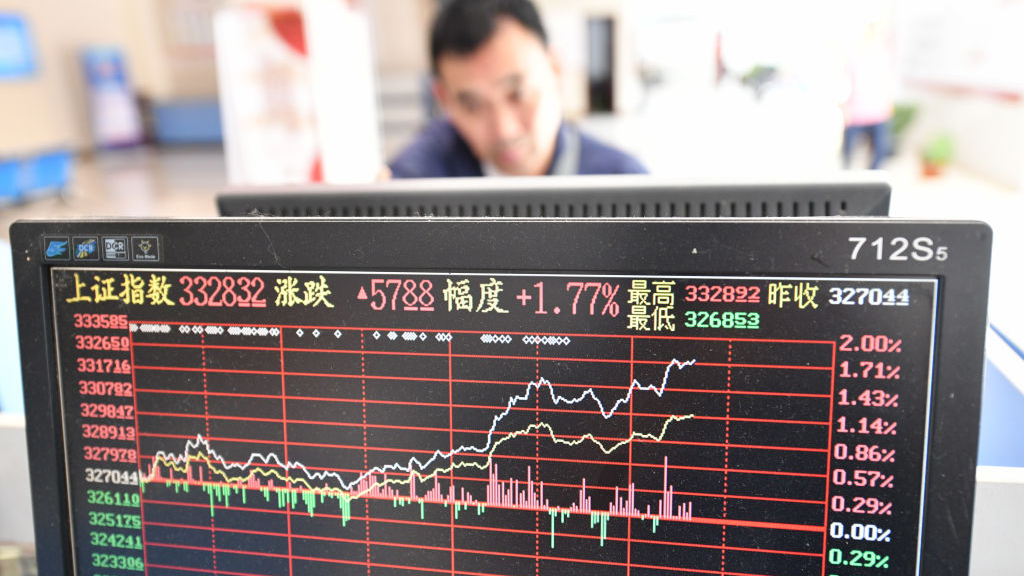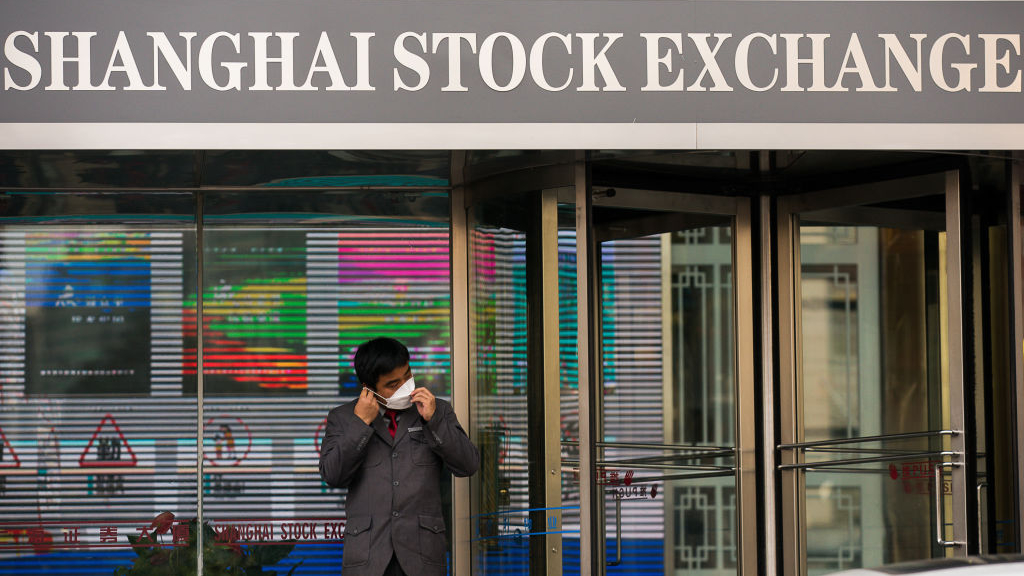
Investors in a securities business hall pay attention to the stock market in Fuyang City, Anhui Province, China, September 18, 2020. /Getty Images
Investors in a securities business hall pay attention to the stock market in Fuyang City, Anhui Province, China, September 18, 2020. /Getty Images
Editor's note: Djoomart Otorbaev, a former prime minister of the Kyrgyz Republic, is a non-resident senior fellow at Chongyang Institute for Financial Studies, Renmin University of China, and a member of the Nizami Ganjavi International Center. The article reflects the author's views, and not necessarily those of CGTN.
On October 13, an important event took place – the value of all public companies in China reached a historic high. The capitalization of the Chinese stock market for the first time since 2015 climbed to $10.08 trillion. The previous record of 10.05 trillion U.S. dollars was set in June 2015, followed by a collapse in the Chinese stock market. After the market spent five years recouping these losses, China's GDP has increased by more than 80 percent.
What are the reasons for the bullish sentiment in the market? China has recovered faster than others since the beginning of the pandemic. According to the World Bank, China's economy will grow by about 2 percent this year, while the U.S. will decrease by 6.1 percent and the eurozone by 9.1 percent.
The country and the regions that remained on the sidelines of political risks – the U.S. and the EU – are now concentrating on their problems. Possible trade softening will take place if Joe Biden were to win the U.S. elections. Then it will only add value to Chinese shares. Besides, the stable situation with COVID-19 and the holiday period in the country have already had a positive effect on investor sentiment.
The stock market crash in 2015 caused serious problems for China's economy. The capitalization of the Chinese markets from their peak values dropped in just a few weeks by $3.5 trillion, 32 percent of GDP. Many companies found themselves without money and investments, saw their sales and profits fall and fired many, or sent them on unpaid leave. Naturally, as the country's economic growth slowed, local and state budgets revenues suffered and unemployment increased.
The main question now is whether a similar collapse of the stock market will happen again. To prevent such a phenomenon, it is important to turn back to the main reasons for the collapse of the market five years ago.
Analysts called the record market performance in 2015 as the "great bubble." Many agree that the "bubble" was fueled mainly by two things: unreasonable leverage trading and the presence of too many lay investors.
By May 2015, the number of accounts from which investors traded with leverage had grown to 7.2 million, doubling in just one year. The volume of borrowed funds used for the investments rose to 2.3 trillion yuan ($370 billion), accounting for 9 percent of the total market capitalization.
According to statistics from China Securities Depository and Clearing Corporation, in total about 10 million investment accounts were opened on the Shanghai Stock Exchange alone that year – more than in 2012 and 2013 combined.
Besides, investors had received additional funds for trading through structured products, like mutual funds, or through other channels, for example, through the over-the-counter market or mutual lending to individuals (the so-called peer-to-peer lending). HSBC estimates that these types of funding could have brought 1.4 trillion yuan ($225 billion) to the market, or 60 percent of the brokers' total funds. In just a few months, the Chinese stock market has grown almost 250 percent.
Investors' qualifications did not meet the required level. According to Reuters, a majority of the new investors in China's market don't have a high school education. These investors accounted for about 90 percent of daily trading volume during the rally in Chinese stocks that began in the second half of 2014.
"Their trades are based on subjective interpretation of public documents, rumors and short-term sentiments. These are the least experienced investors in the market and history shows that most of them end up losing money," wrote analysts of the Bank of America. The local stock market operated as a casino, with prices driven by luck and hearsay.

A security man removes his protective mask by the entrance of the Shanghai Stock Exchange Building in Shanghai, China, on March 24, 2020. /Getty Images
A security man removes his protective mask by the entrance of the Shanghai Stock Exchange Building in Shanghai, China, on March 24, 2020. /Getty Images
The collapse reverberated around the world and resulted in intervention by the Chinese authorities in a doomed attempt to prop up the market. The government enacted many measures to stem the tide of the turbulence.
Regulators limited short selling under threat of arrest and stopped initial public offerings. The People's Bank of China announced a reduction in interest rates and reserve requirements. It also promised to provide additional financial assistance to companies, mutual funds and pension funds by buying up shares.
China's Securities Regulatory Commission (CSRC) imposed a six-month ban on stockholders owning more than 5 percent of a company's stock from selling those stocks. Around 1,300 firms, representing 45 percent of the stock market, suspended trading. In the interest of investors, regulators imposed a ban on the sale of shares of state-owned companies. The ban applied to dozens of the largest Chinese corporations, covering aircraft, shipbuilding, energy, telecommunications, automobile holdings and other industries.
Looking back to 2015, it becomes clear that it is unlikely that the situation will be repeated anytime soon. None of the reasons that led to the previous collapse of the exchanges exist today. The lessons of that time were carefully studied and a new tougher legal framework and regulatory environment emerged.
In comparison with 2015, the main parameters of the markets drastically improved. Currently, the most professional institutional investors own more than 70 percent of the free float of all Chinese stocks, foreign investors hold about 5 percent, margin and leveraged financing are equivalent to about 5 percent of market capitalization, compared with about 10 percent during 2015's bubble, China Renaissance bank has estimated. The CSI 300, which is a capitalization-weighted China's stock market index, currently trades at less than 19 times its past 12 months' earnings, compared with more than 40 at the index's 2015 peak.
Today, both government regulators and market participants better understand their functions in balancing their positions.
It is impossible to stop manipulations and eliminate short-term speculations with securities on the stock market. But it is extremely important to maintain sustainable parameters of the market and not allow uncontrolled panic actions from market participants. The lessons of 2015 must not be forgotten.
(If you want to contribute and have specific expertise, please contact us at opinions@cgtn.com.)